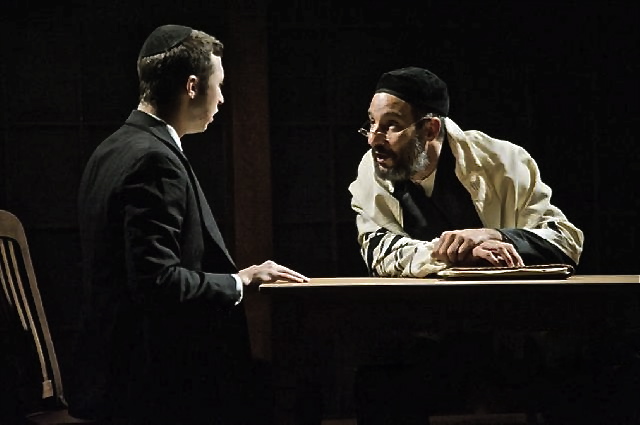Of Beauteous Saints
Joy and Matthew Steem
 I find something indescribably haunting about the “woman most beautiful of all” in George MacDonald’s Lilith, for on her “stately countenance” rests a “right noble acquiescence” and “assurance, firm as the foundations of the universe, that all ... [is] as it should be." For me, the white-haired woman who captures the intrigue of the protagonist, Mr. Vane, is an image of what a physically and spiritually mature approach to being human might look like. In the gallery of my mind, her resplendent repose reflects an organic and wholesome response to her world rather than a hasty effort conceived in restlessness. Ultimately, when I think of the portrait of this pulchritudinous lady, I think of an individual who has overcome our inborn resentment of time; she is one who, as Byron penned, “walks in beauty.”
I find something indescribably haunting about the “woman most beautiful of all” in George MacDonald’s Lilith, for on her “stately countenance” rests a “right noble acquiescence” and “assurance, firm as the foundations of the universe, that all ... [is] as it should be." For me, the white-haired woman who captures the intrigue of the protagonist, Mr. Vane, is an image of what a physically and spiritually mature approach to being human might look like. In the gallery of my mind, her resplendent repose reflects an organic and wholesome response to her world rather than a hasty effort conceived in restlessness. Ultimately, when I think of the portrait of this pulchritudinous lady, I think of an individual who has overcome our inborn resentment of time; she is one who, as Byron penned, “walks in beauty.”
Indeed, the more I think of the characteristics of this unnamed lady, the more I am reminded of the saint which Gordon T. Smith depicts in Called to Be Saints: An Invitation to Christian Maturity. For Smith, in a saint, we encounter “beauty, integrity and congruence." He suggests these characteristics are not achieved by merely trying to emulate Christ’s life on earth. Nor are they attained by adhering to some sort of a moral code. In fact, he suggests that in striving for rigid perfection, we dislocate ourselves from a spiritual life that genuinely flourishes. Instead of toil, Smith advocates humble response; instead of fear, Smith draws our attention to hopeful faith; instead of proving ourselves through our work, Smith reminds us of Love’s work. Ultimately, he reminds us that He is the vine and we are the branches; there is great rest in understanding that instead of trying to be like Christ, our call is to realize we are in Christ.
Which brings me back to MacDonald’s lady: in her stately countenance, I see the reflection of a wisdom grounded in an understanding of interdependence and borne out in humility. In her noble acquiescence, I envision an approach to work that glorifies the divine; she is not frenetic or flustered, but rather content with what time she has been gifted to live in and work with. In her assurance, I visualize a life of joyfully ordered affections because she has an inkling of the depth, width, and breadth of the creator’s love. And so, in “this woman most beautiful of all,” I see a portrait of Smith’s saint; for at the marrow of Smith’s invitation is the reminder that our creator’s call does not only save us from, but saves us to: to an abundant life which results from restfully abiding in our maker.
Maybe, for me, she is an image of Smith’s saint because in time she has grown wiser, not just older. She has employed her minutes, hours, days and years not in despising time, but embracing its facilitation of her growth. In nurturing a life-affirming delight in God’s good creation she has not indulged in ignorance of the horrific evil at work in the world. Rather, her peaceful gaze assures me that, like a true heroine, she has lived out her days in a grace and gratitude and wonder that holds fast to a belief in an impending Eucatastrophe: a swiftly advancing redemption so beautiful its event will bring forth tears of joy.













